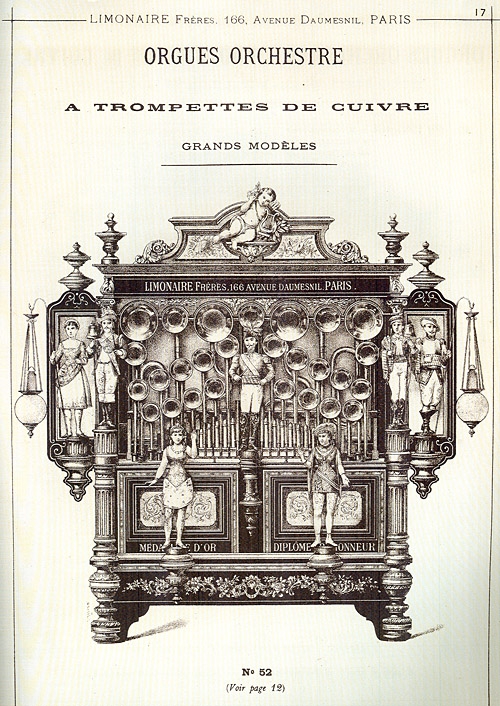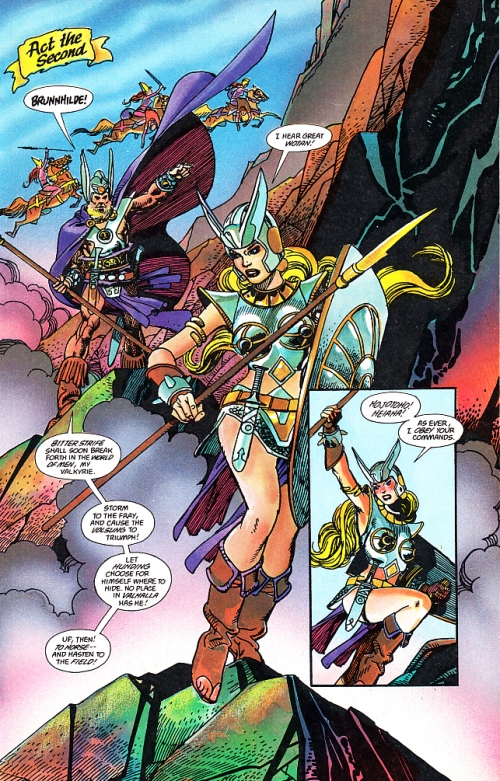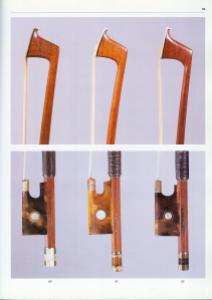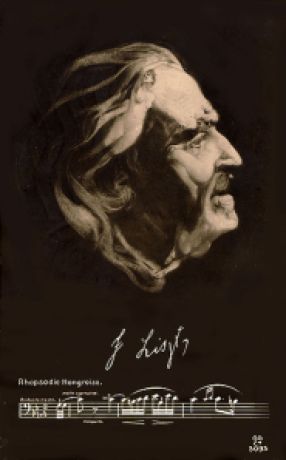Instrument makers’ catalogues can be important sources of iconography: they indicate what instruments people were making and buying at a given place and time, and sometimes they depict rare curiosities like the brass instruments in this 1867 catalogue from the Gautrot firm, reprinted in 1999 by Larigot. The mechanical organ pictured above comes from a catalogue issued by Limonaire Frères around the turn of the twentieth century, reprinted in 2009 by Das mechanische Musikinstrument.
Program notes
Like souvenir books, program notes may be considered ephemera, but often they are the best sources for information about important productions, festivals, and other events. Some, like Playbill, are issued as numbered periodicals that libraries and individuals subscribe to. Others include original essays by distinguished scholars—for example, the program book for the Smithsonian Institution’s 1997 Festival of American Folklife (above) included articles by the ethnomusicologists Angela Impey, Joyce Marie Jackson, and Jeff Todd Titon.
Related Articles
- You: Smithsonian Folklife Festival shines spotlight on Haitian art and culture (washingtonpost.com)
Comments Off on Program notes
Filed under North America, Publication types, World music
Elektronische Zeitschriftenbibliothek
The Elektronische Zeitschriftenbibliothek (EZB), which was developed at the Universitätsbibliothek Regensburg with the Universitätsbibliothek der Technischen Universität München (above), provides an international list of musicology journals that are available on the Internet. The complete database, which is regularly updated by 545 libraries and research institutions, indicates whether each journal is open-access or subscription-based, and provides links to the journals themselves; it currently lists 47,117 titles, including 6150 journals that are only available online and 23,655 journals that can be read for free.
Comments Off on Elektronische Zeitschriftenbibliothek
Filed under Resources
Wiener Bruckner-Studien
In 2009 Musikwissenschaftlicher Verlag inaugurated the series Wiener Bruckner-Studien with Anton Bruckners Wiener Jahre: Analysen—Fakten—Perspektiven. Edited by Renate Grasberger, Gernot Gruber, Uwe Harten, Paul Hawkshaw, Elisabeth Maier, and Erich Wolfgang Partsch, the series is a forum for Bruckner scholars, students, and enthusiasts, with contributions from are internationally renowned Bruckner experts as well as scholars from other fields; it will include reference works, studies of Bruckner’s works and their reception, as well as biographical studies. The first volume is a mosaic-like exploration of diverse aspects of Bruckner’s time in Vienna.
Comments Off on Wiener Bruckner-Studien
Filed under New series, Reception, Romantic era
Operas as graphic novels
With their dramatic action and vivid characters, operas have inspired a number of graphic novels, including books by P. Craig Russell and a series (now out of print) produced in collaboration with England’s Royal Opera House. The most noteworthy examples of this genre are not just illustrations of libretti; they are autonomous works of art in the graphic novel tradition.
Wagner’s Der Ring des Nibelungen is particularly suited to the treatment it receives in The ring of the Niebelung by Roy Thomas and Gil Kane; set in a mythological time, with illustrious characters who can alter their physical forms, defy gravity, and survive without oxygen, it fits naturally into the medium’s world of fantasy and superheroes.
In some cases this drammata in pittura brings a powerful new dimension to Wagner’s drammata in musica—for example, the action that the audience must imagine during the Vorspiel of Die Walküre is fully depicted over the course of four textless pages. The cycle was first published in four installments by DC Comics.
Above, the opening of Act II of Die Walküre (click to enlarge); below, part of the 2011 production by the Metropolitan Opera.
Related article: The Ring recast
Comments Off on Operas as graphic novels
Filed under Dramatic arts, Opera, Publication types, Romantic era, Visual art
Souvenir books
Often souvenir books are considered ephemera: Most libraries do not purchase them. Sometimes, however, they take the form of a book of articles by notable authors; these are treated as essay collections by libraries and by RILM. For example, the souvenir book published by New York’s Metropolitan Opera for their 1988 production of Wagner’s Der Ring des Nibelungen includes contributions by the musicologists Carolyn Abbate and Barry Millington and the poet and literary critic Richard Howard.
Comments Off on Souvenir books
Filed under Dramatic arts, Publication types, Reception, Romantic era
Muzikologija bez granica/Musicologie sans frontières
In 2009 the Hrvatsko Muzikološko Društvo launched the series Muzikologija bez granica/Musicologie sans frontières with “Teatro di poesia” in the opera house: The collaboration of Antonio Smareglia and Silvio Benco by Juliana Ličinić van Walstijn. The book focuses on the three operas that resulted from collaborations between the Croatian composer Antonio Smareglia (1854–1929) and the Italian writer Silvio Benco (1874–1949).
Comments Off on Muzikologija bez granica/Musicologie sans frontières
Filed under Dramatic arts, New series, Opera, Romantic era












